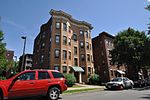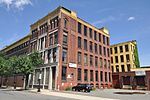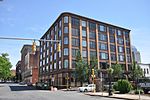Our Lady of the Rosary Parish, Springfield
Polish-American Roman Catholic parishes in MassachusettsRoman Catholic parishes of Diocese of Springfield in MassachusettsUnited States Roman Catholic church stubs
Our Lady of the Rosary Parish - designated for Polish immigrants in Springfield, Massachusetts, United States. Founded 1917. It is one of the Polish-American Roman Catholic parishes in New England in the Diocese of Springfield in Massachusetts.The Diocese of Springfield announced that the parish would close after Mass on January 28, 2018, owing to declining attendance and maintenance issues. Immaculate Conception Parish will serve as the receiving parish.
Excerpt from the Wikipedia article Our Lady of the Rosary Parish, Springfield (License: CC BY-SA 3.0, Authors).Our Lady of the Rosary Parish, Springfield
Franklin Street, Springfield
Geographical coordinates (GPS) Address Nearby Places Show on map
Geographical coordinates (GPS)
| Latitude | Longitude |
|---|---|
| N 42.114027777778 ° | E -72.589444444444 ° |
Address
Franklin Street 334
01101 Springfield
Massachusetts, United States
Open on Google Maps











